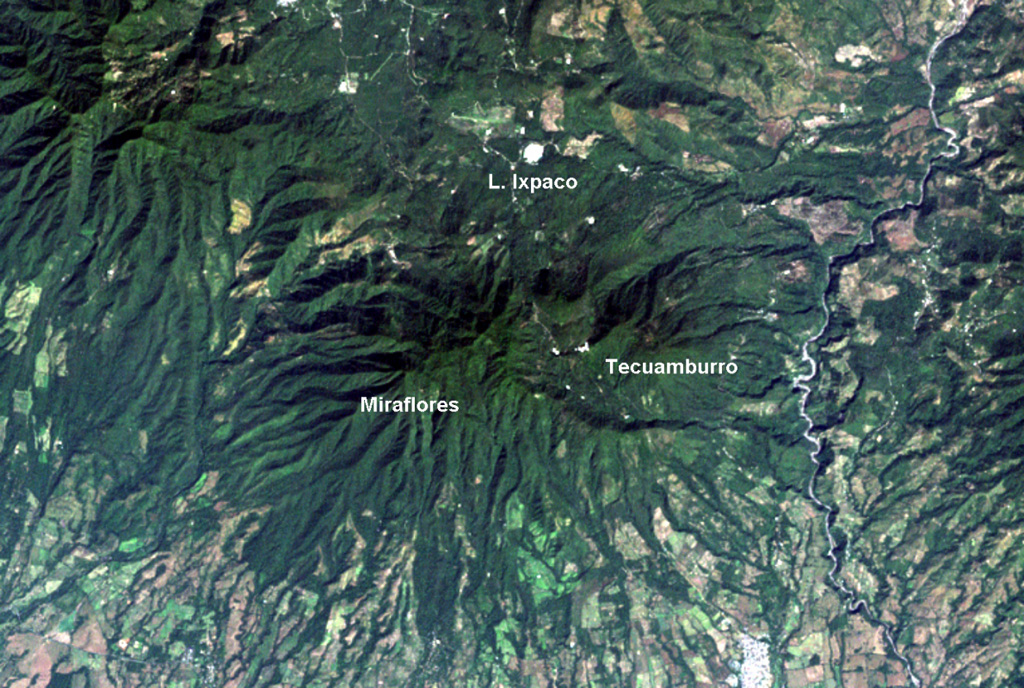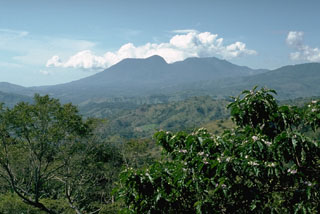Global Volcanism Program | Image GVP-10494

The Tecuamburro volcanic complex has a diverse history. Collapse of the ancestral Pleistocene Miraflores edifice underwent collapse, producing an avalanche deposit that traveled across the Río los Esclavos (right) and forming a large horseshoe-shaped crater open to the east. The modern Tecuamburro complex, consisting of four lava domes, was constructed within this scarp. The Laguna Ixpaco crater was created about 2,900 years ago within the much larger Pleistocene Chupadero crater.
NASA Landsat image, 2000 (courtesy of Loren Siebert, University of Akron).
![]() This image is made available under the Creative Commons BY-NC 4.0 license terms.
This image is made available under the Creative Commons BY-NC 4.0 license terms.
Keywords: flank collapse | landslide scarp | stratovolcano

Tecuamburro
